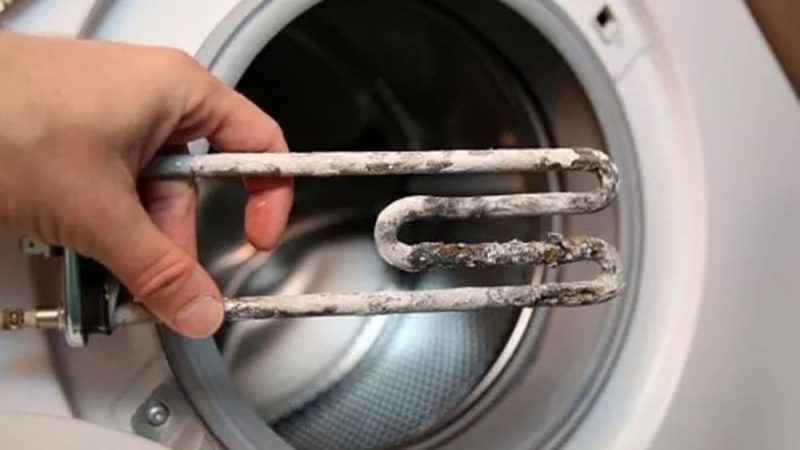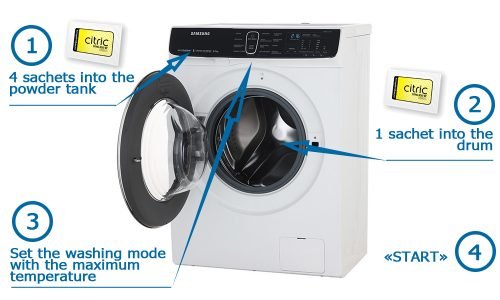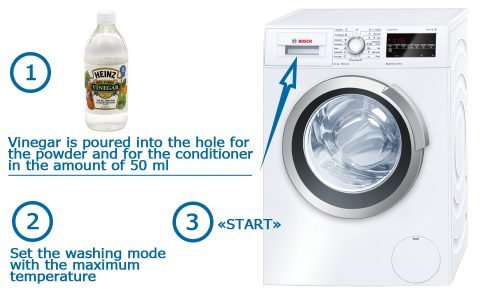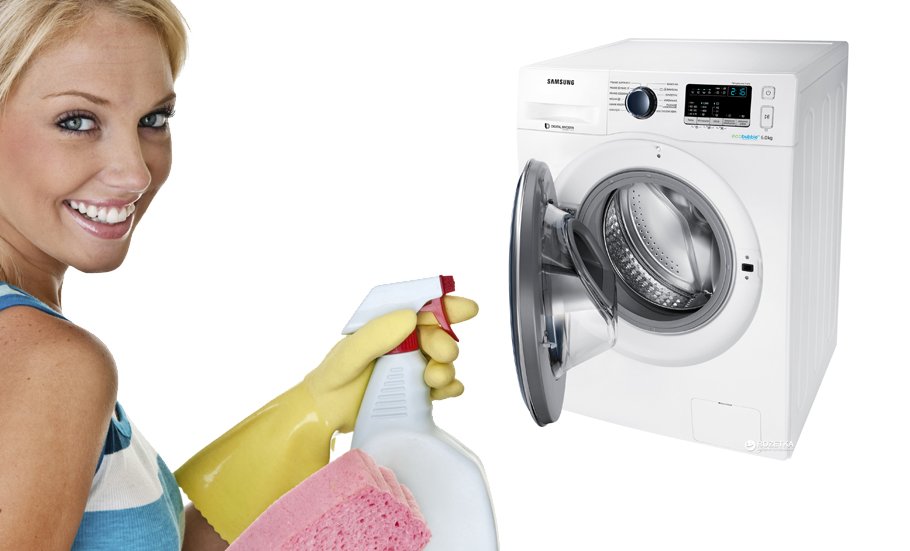
There is no time and forces for manual washing after a hard working day. The smart assistant comes to help, namely, an automated washer. You throw dirty linen, push a button and in an hour or a bit longer your things are clean. The service life of this miracle of technology is about 10 years. But dust, dirt, “hard” urban water significantly shorten this time.
There might be such trouble, that one day the automated device will stop working without visible reasons, though the actual reason is limescale. The silicate scaling of heavy metals on a tubular electro-heater (TEH) leads to a full stop of work of the washer. If the automated washer unexpectedly stops working, first of all, it is necessary to define what the cause of the breakdown is. According to statistics, the main cause of this trouble is the formation of scale on TEH and a dense blockage of the filter.
The Filter Cleaning of the Drain Pump of the Washer
Just a few people know about the existence of this filter, but its blockage is not uncommon. Ignorant people might pay an incredible sum of money to the specialist who will “fix” the washer, although there is no failure there – it is just necessary to remove dirt from the drain filter. It is located on the front side of the washer; you can see the square outline of the cover at the bottom. What should you do next?
- Having opened the plug, you will see a tube that covers the drain filter hose. Before you pull the plug, place the receptacle as water may pour from the hose.
- You will instantly see the cause of the blockage behind the tube – all the buttons, hair, shells of seeds and the rest of the pollution ends up in the drain filter after each wash. If it has never been washed, it may have an unpleasant smell. Release the filter from the accumulated dirt with your hand in a glove.
- Wipe the filter dry with a dry cloth.
- It is preferable to wash the drain filter after each wash, at least 2 times a month.
Getting Rid of the Dirt in the Removable Compartment for Powder and Detergents
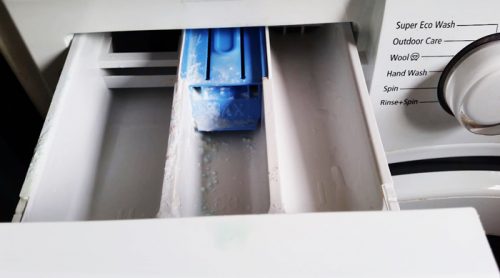
Most often, nobody looks into this container – they pour the powder into the tank, pour some conditioner for the laundry, shut the door and start washing. But if you look there, you can see a lot of interesting things. There will be dirt, black stains in the form of mildew and even fungus. An unpleasant spectacle, and most importantly – all this dirt is in contact with the drum and your laundry during every wash.
How to remove dirt from the container for powder and get rid of mildew:
- The tank is easily removed from the compartment. Take out the receiver for the powder, take the sponge, or better – an old toothbrush, lather with laundry soap and try to clean all the accumulated deposits of dirt and mold.
- There can be some residue in the tank for the conditioner. It is easy to get rid of the residue, using the agent for removing contaminants from the toilet. You can take an inexpensive agent with chlorine; pour 20-30 ml into the compartment. Allow it to stand for 1-2 hours. The particles of mildew dissolve together with the residue.
- It is not difficult to clean the powder container. So, rinse the tank after every 3-5 washes as a preventive measure to avoid the formation of contamination and mildew.
How to Сlean the Heater in the Washing Machine from Scale
This element is the most subjected to breakage. If your main water has an increased level of ‘hardness’, i.e. the amount of impurities in the form of metals, salts, and rust exceeds the norm, the risk of premature failure of the heater is very high. A layer of scale, which grows with each wash, is formed on it. When there appears too much scale, the heater (tubular electric heater) does not allow the washer even turning on the washing program. You will learn about the failure of the electric heater, if the washer suddenly turns off in the midst of work, and completely stops working from that moment.
How to Descale the Washer with Citric Acid
Ordinary citric acid helps to remove scale. The amount of citric acid powder depends on how much the heating element is covered with scale. On average, 5 sachets of citric acid are required for an automated washer with a load of 5 kg. Of these, pour 4 sachets into the powder tank, and 1 sachet into the drum itself. Set the washing mode with the maximum temperature – 90-95 ° C.
While draining the water, you will see whole pieces of dirty grayscale coming out. The main thing is that the splinters of scale would not clog the drain hose. Otherwise, you will have to clean it manually.
You can use citric acid twice a month.
Cleaning Inside with Vinegar
Descaling of the heater with vinegar is less popular than the previous one, but it also exists on the forums on the Internet. Acetic acid is more aggressive than citric acid. When it is used, the seals (rubber details) of the washer can be damaged. However, it allows removing scale from the electric heater better and faster.
Vinegar is poured into the hole for the powder and for the conditioner in the amount of 50 ml. It’s up to you to decide whether you can trust this folk means. Evaluate reasonably all of the above-mentioned means.
Remove Dirt from the Drum of the Automated Washer
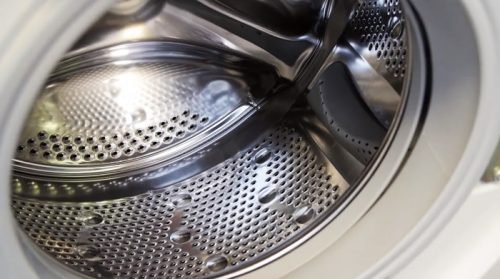
Dirt and calcareous deposits can also accumulate there. Some models have automatic drum cleaning function. It is enough to press the button and you can observe the process without any interference.
A few important tips on how to wash the drum if there is no such special function:
- Pour 100 ml of bleacher into the drum of the washer. Start a wash program without laundry with a temperature of at least 60 ° C. The drum will be cleaned, unpleasant smells will be eliminated.
- Pour 2 sachets of citric acid into the empty drum. Start the wash mode with the maximum temperature. It is good if there is a double rinse mode, it will help remove the entire residue.
- Prepare soda ash solution to rinse the machine: stir the powder with water at a ratio of 1 to 1. Rub the drum and the rubber gasket around (always in gloves!) with the mixture, and then leave them so with the door open for half an hour. After that, remove the remnants the sponge, and remove the particles invisible to the eye with the fast, non-loaded mode (without clothes).
- Keep the washing machine door ajar until the drum dries completely after each wash. Otherwise, it will have an unpleasant smell, which will have to be removed.

